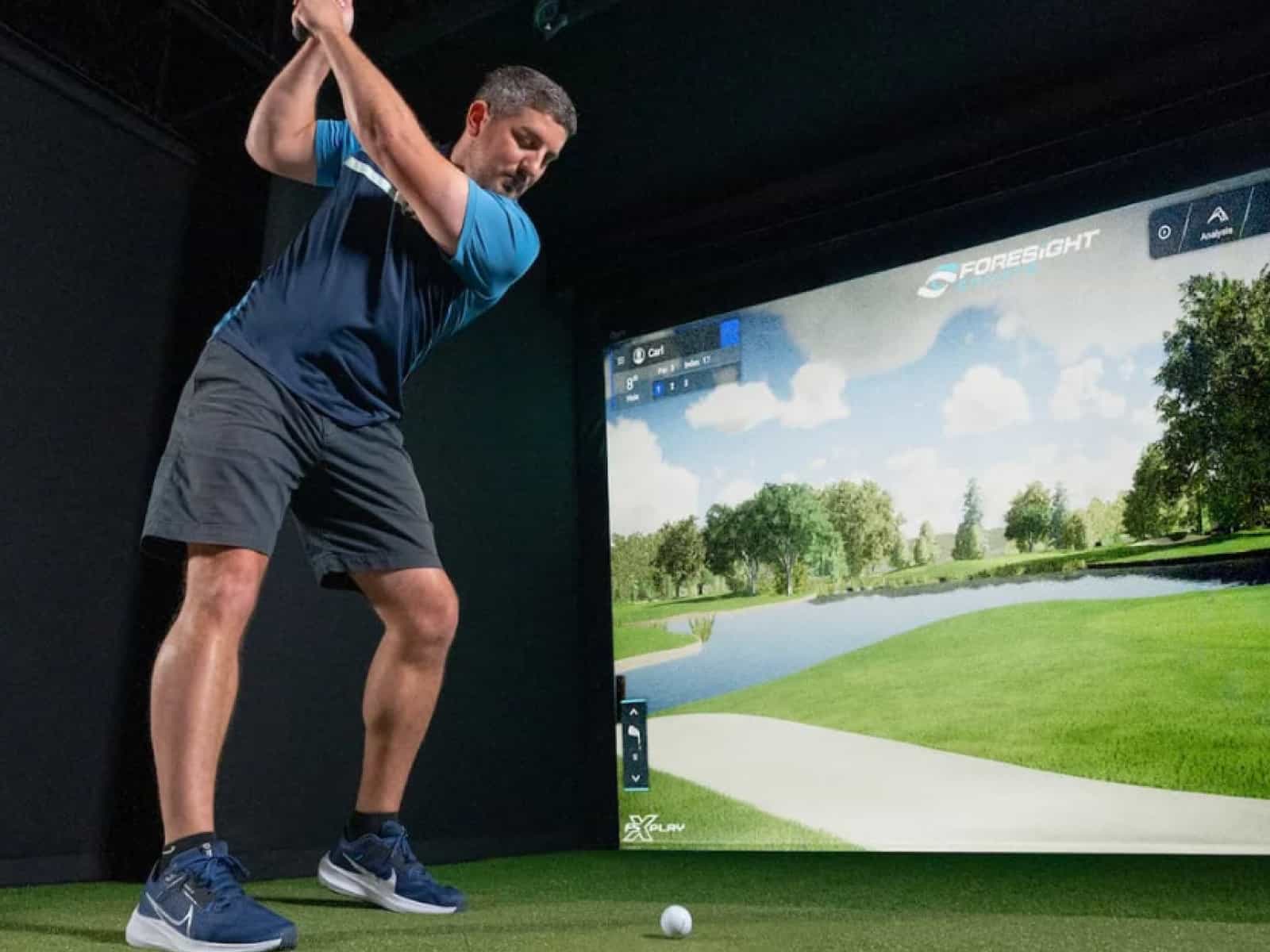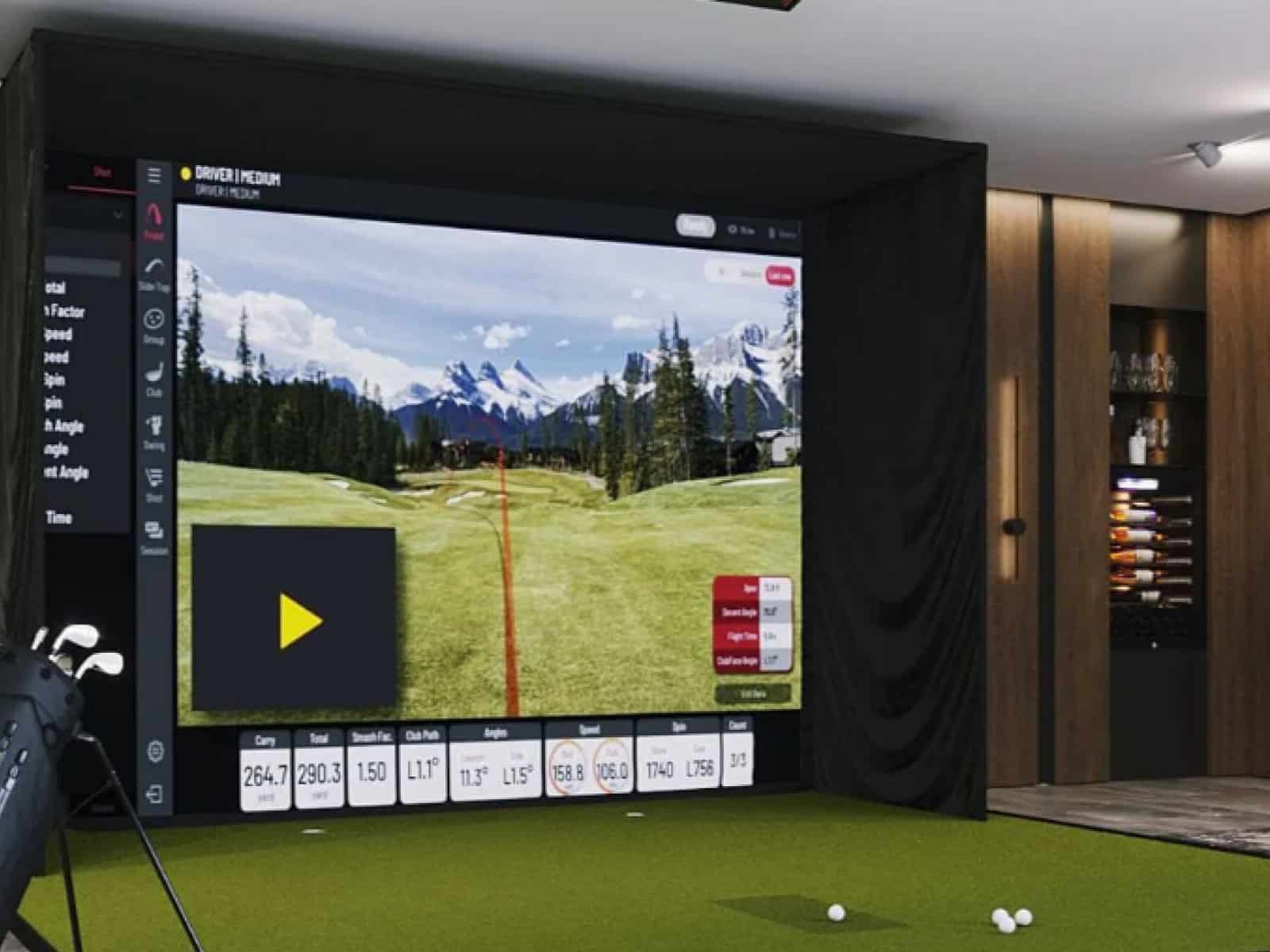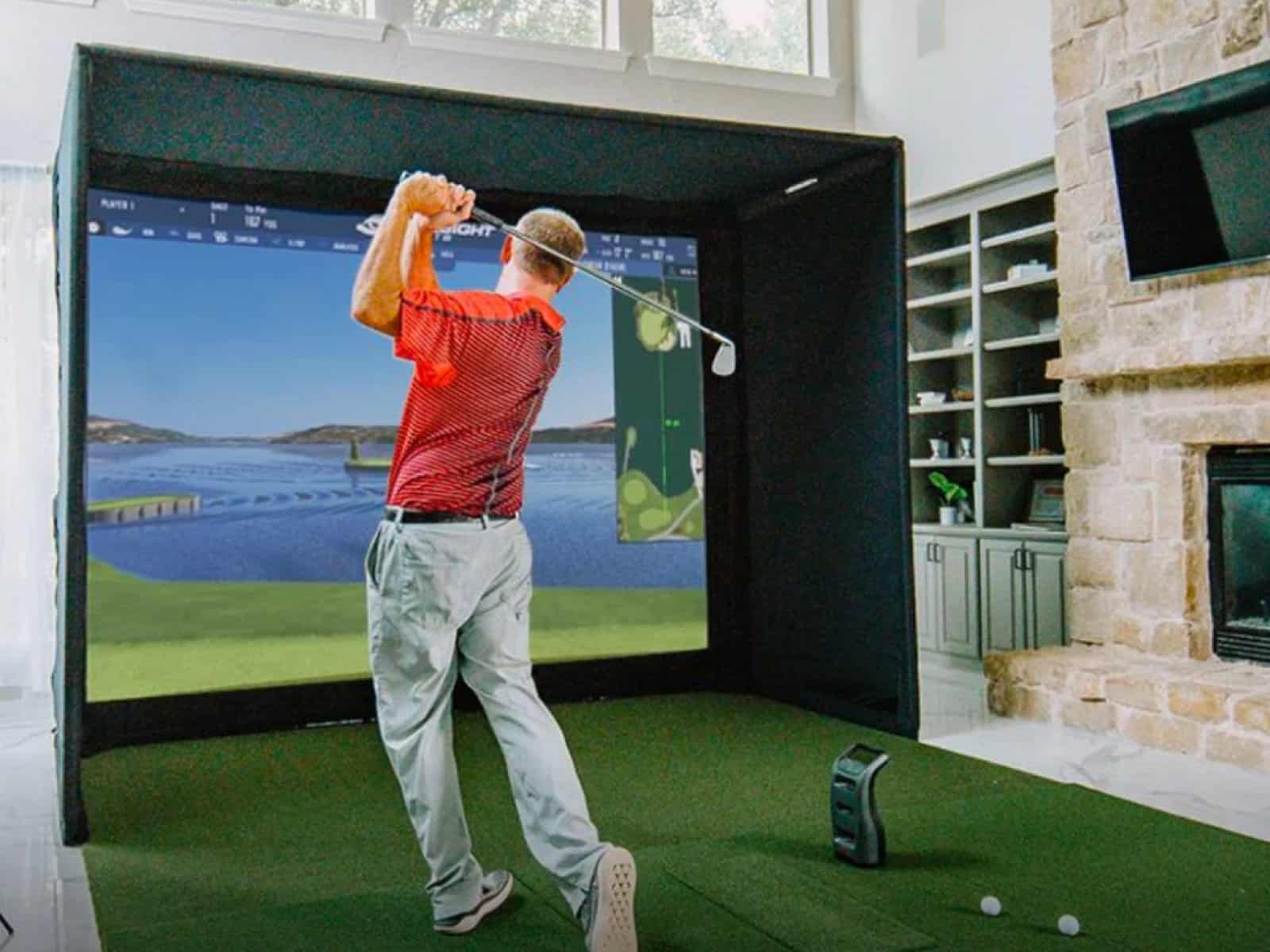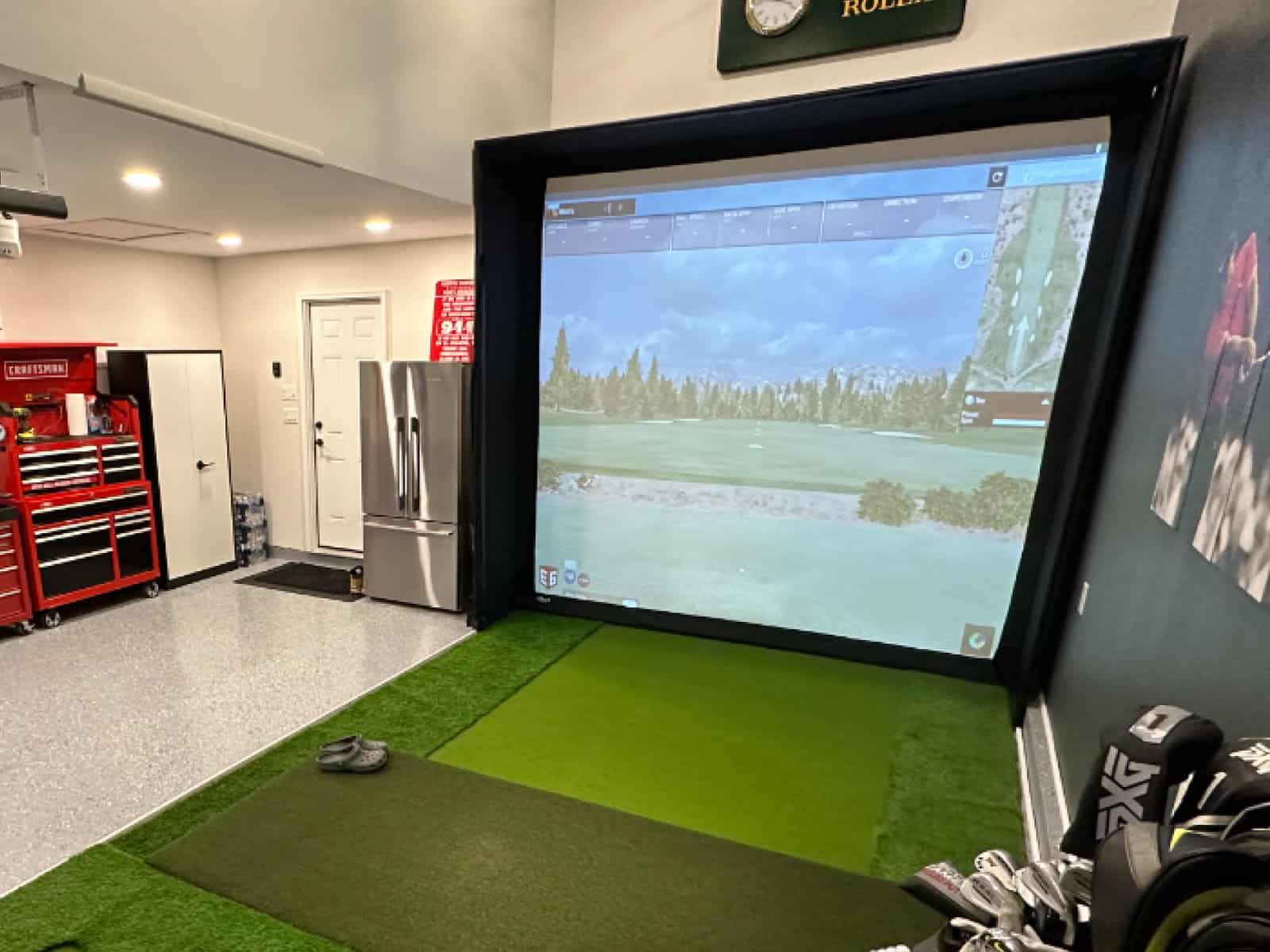One of the biggest frustrations in golf is hitting a shot that curves wildly off target. Two common mis-hits amateurs struggle with are slicing and hooking the ball. While professionals have very repeatable swings, most average golfers hit inconsistent shots.
When the clubface is open relative to the target line at impact, it can cause a slice. The clubface points right of the target and spins the ball in that direction. Similarly, a closed clubface at impact often hooks the ball left.
In this article, we will explore whether golf simulators are capable of detecting slices and hooks, and if they do, how they can help you get rid of those annoying mishits. We will also answer some commonly asked questions to provide more insights into the topic.
Overview of Slices and Hooks & Their Effects on Your Game
Let’s start by going through the concepts of slices and hooks and exploring how they can negatively affect your overall game.

What Causes a Slice?
A slice most often occurs when the clubface is open and the swing path moves out-to-in across the ball. This interaction between the clubface angle and the swing path makes the ball curve dramatically right to left in the air.
Some common reasons recreational golfers slice shots are:
- The grip is too weak, leaving the clubface open
- Overactive right hand turning through impact
- Out-to-in downswing path
What Causes a Hook?
Hooking the ball is the opposite error, with the ball curving left to right. Hooks happen when the clubface is closed relative to the target, and the swing path is inside-out.
Some things that can cause an amateur golfer to hook the ball are:
- Strong grip leading to a closed clubface
- Cupped left wrist at impact
- Inside-out swing plane through the ball
For most average golfers, slices and hooks lead to very inconsistent ball striking. This makes it hard to play strategically and score well. Being able to straighten mis-hit shots is key to improvement.
The Downsides of Slicing and Hooking
Golfers aiming to reach their scoring potential need consistent ball striking. Slices and hooks balloon scores in several ways:
- Miscalculated distance control from curved flight
- Penal rough, hazards, and out-of-bounds from offline shots
- Inability to shape controlled shots intentionally
Since a hook curves left and a slice right, it’s hard to develop a strategy to hit fairways or attack pins. Mastering a repeatable, on-plane swing is pivotal for better golf.
How Launch Monitors Work
Modern golf simulators and practice facilities use advanced launch monitor technology to track comprehensive data about a player’s swing and resulting ball flight. This includes detailed club and ball metrics that can indicate swing errors like slicing or hooking the ball.

Launch monitors use radar, cameras, and infrared sensors to precisely measure the entire motion of the club and trajectory of the ball after impact. The data collected can help understand deficiencies in your mechanics and work towards hitting it straight.
For a deeper understanding of the distinction between launch monitors and golf simulators, and the specific features of each, you can refer to our article on the difference between a launch monitor and golf simulator.
If you’re interested in learning more about launch monitor and its technologies, you can check our guide here.
Tracking Clubhead Metrics
Sophisticated launch monitors can track key clubhead measurements including:
- Clubhead speed
- Clubface angle at impact
- Club path swing plane
- Point of impact on the clubface (heel, toe, center)
This quantitative data reveals relationships between the clubface and swing path that determine the resulting ball flight. However, understanding factors beyond these metrics, such as the smash factor, can provide even deeper insights into ball striking efficiency and power generation.
Tracking Ball Metrics
In addition to club data, launch monitors also track comprehensive ball metrics, including the following:
- Ball speed
- Launch angle
- Backspin rates
- Sidespin rates
- Flight curvature
Together, the club and ball data can indicate the shape and trajectory of every shot.
Typical Launch Monitor Specifications
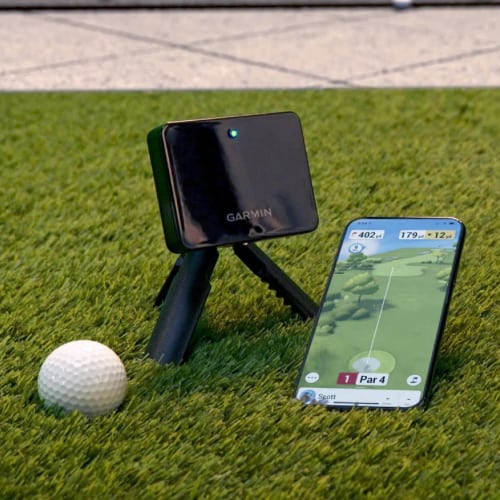
Most modern launch monitors claim to measure clubhead speed within 1 mph and ball metrics to a few yards of accuracy. While affordable models have limitations, high-end systems provide data precise enough for elite players and club fitting purposes.
Understanding launch monitor technology and the available data empowers golfers to analyze their swing. Next, we will explore how that information can specifically be used to detect and correct slicing and hooking.
Can Launch Monitors Detect Slices and Hooks?
Understanding what causes slices and hooks, along with the data launch monitors track, we can analyze their capability to detect these mishits. While limitations exist, certain metrics can indicate these swing errors.

Detecting Clubface Angle at Impact
A chief contributor to slicing or hooking is an open or closed clubface relative to the target line at impact. Launch monitors directly measure clubface angle to quantify this relationship.
Seeing clubface angle data on a slice or hook helps determine its cause – was the face open or closed to the target? This helps guide appropriate swing adjustments.
Detecting Ball Spin Axis
In addition to clubface orientation, launch monitors measure the backspin axis on the ball after impact. For a sliced shot, this axis tilts right, while hooks have more left spin axis.
Comparing the numbers to straight shots shows curvature – a slice will have significantly more side spin right. These metrics confirm a push, pull, slice or hook, even if the ball itself can’t be seen.
Limitations of Launch Monitors
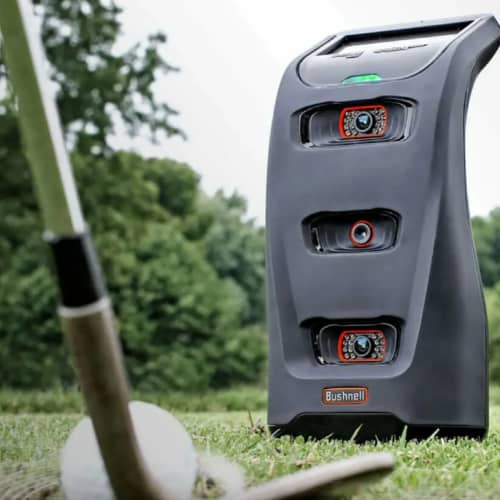
Recreational-grade launch monitors have limitations in accurately detecting and quantifying slices and hooks for average golfers. They may wrongly attribute side spin to gear effect.
Also, while monitors measure clubface angle, they don’t indicate if it was open/closed due to alignment or swing path. Thus some interpretation of the data is required to correct the errors.
In short, under optimal conditions, launch monitors provide metrics to help indicate and correct mis-hit slices and hooks. But using discretion with the data is important too.
Understanding launch monitor limitations highlights the importance of proper swing mechanics for consistent ball striking. While they offer valuable insights, for those seeking a more hands-on approach to perfecting their game, exploring resources like how to build a DIY golf simulator might be beneficial to create a personalized practice space, potentially incorporating launch monitor technology in the future.
Using Data to Correct Slices and Hooks
If you know you tend to slice or hook based on launch monitor data, then the numbers provide ways to help ingrain straight ball striking.
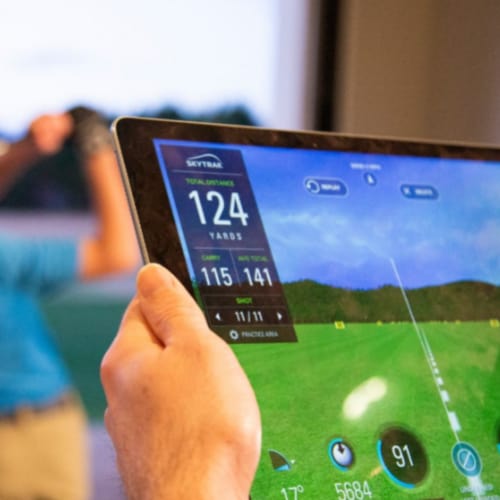
Adjusting Clubface Angle
Seeing metrics on an open or closed clubface at impact should guide adjustments before that position is reached. For example:
- For slices, weaken the grip to close the face
- Hooks may stem from a cupped lead wrist, so focus on the angle
Controlling Swing Path
In addition to clubface, the data also shows the swing path. You can practice controlling the following:
- The clubhead’s direction at impact
- The body turn in the backswing and downswing
- The low point relative to the ball
Matching the plane line further reduces slices and hooks.
Getting Lessons for Persistent Issues
Even with data, some recurrent swing errors causing slices or hooks can be hard to self-diagnose. If launch monitor metrics show persisting problems, try to take a lesson and have a pro analyze your data; they can scrutinize the motions that the numbers represent.
Additionally, you can practice with some refinement drills and work on feels to straighten the clubface and path.
Frequently Asked Questions
Here are answers to some common questions golfers have about using golf sims/launch monitors to detect and correct slicing and hooking the ball:
Can Any Launch Monitor Detect Slice or Hook?
Basic, affordable launch monitors have limitations and may not accurately quantify sidespin and attribute it between face angle and path. High-end systems, on the other hand, are more reliable for parsing hook vs. slice.
How Accurate Are Launch Monitors for Amateurs?
Recreational golfer swing speeds, inconsistent ball strikes, and miscues decrease accuracy, particularly for budget launch monitors. However, they can still indicate overall ball curvature issues.
Do I Need Professional Help if I Slice or Hook?
Probably, yes. While launch monitor data helps, some persistent faults causing slices or hooks can be hard to self-diagnose from numbers alone. Taking some lessons can provide more rapid improvement.
What Other Data Points Indicate Slices or Hooks?
In addition to clubface angle and ball spin axis, pay attention to trends in offline distance and direction as possible signs of a recurring slice or hook pattern.
Are Launch Monitors Worth the Investment?
Yes, for golfers motivated to improve their ball striking, launch monitors are invaluable feedback tools. Just ensure the chosen model matches your skill level and budget needs.
Final Thoughts
Hitting shots that fly straight is pivotal for strategic golf and scoring. However, many average players struggle with mis-hit slices and hooks that send the ball sharply offline.
Modern launch monitor technology tracks comprehensive club and ball data that can indicate these errors. Metrics like clubface angle, swing path, and ball spin precisely quantify relationships causing slices and hooks.
While affordable launch monitors have some limitations in swing flaw detection, especially for amateur golfers, they still provide useful feedback. The numbers empower self-diagnosis of deficiencies and tailored practice. Launch monitor feedback accelerates eliminating slices or hooks. The quantitative data renders visible the unseen elements influencing all shots.
So while the sensors cannot feel or perfectly analyze a swing, taking advantage of the information they provide helps rapidly straighten any curvature issues. Mastering launch monitor metrics paves the path to better ball striking.
Thanks for reading!

